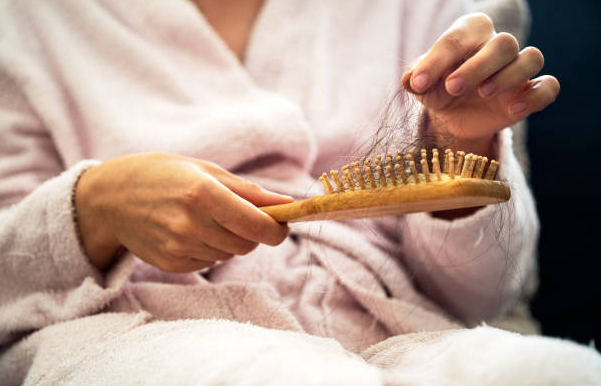
Thinning hair and a receding hairline become an unpleasant reality for many men. Milestones like a new company headshot or annual family photos present a year-over-year comparison, often delivering a major reality check. Your hairline isn’t what it used to be and, if you’re being honest, you don’t feel like yourself either.
When an aspect of your appearance changes outside of your control, feelings of helplessness sink in. It’s a blow to your confidence that, despite doing everything else “right,” your hairline hasn’t gotten the memo. Fortunately, you don’t have to accept the genetic reality that is hair loss. Hair transplant technology is more effective, less invasive, and more accessible than ever. Read on to learn more about hair transplantation and how it can benefit you.
1. Lasting Results With Little Downtime
Your first thought when “hair transplant” comes to mind may be the hair pattern dotting a sibling’s old dolls. While the comparison to old-school transplant techniques is a fair one, modern methodologies make today’s procedures nearly impossible to spot.
Follicular unit extraction, or FUE, is one of the most effective and least invasive hair transplant procedures available. If you have healthy donor hair where thinning is less common, you may be a candidate. In his procedure, a surgeon extracts healthy individual hair follicles and implants them in the areas you’d like to restore. Generally completed in just one day, you can be back to your normal activities in days with standard post-operative care.
After a few weeks, the transplanted hair will fall out, a normal and expected part of the healing process. Most recipients are prescribed antibiotics and anti-inflammatory medication to deter infection and promote healing. New growth typically begins in just a few months and will grow just as the rest of your hair does.
Support your new growth with prescriptions that help hair grow and resist shedding. Topical minoxidil promotes more dense new growth quickly, and oral finasteride will help you grow and retain new hair. Your prescriber will assess your individual situation to determine the right combination, as well as best practices to maintain results.
2. Using Your Own Follicles Gives a Natural Look
There’s nothing like your natural growing hair, but when genetics and external factors like stress strike, hair loss happens. With a hair transplant, your natural, growing hair is moved to sparse areas of the scalp. Transplanted hair is a perfect match to that adjacent to it, which helps new hair blend seamlessly.
With FUE, individual follicles can be dispersed strategically across thin areas of the scalp. Another procedure, follicular unit transplant (FUT), transplants strips of hair to new areas, resulting in donor site scarring. Both procedures provide recipients with improved hair density using their natural hair, but the quality of the results differs.
Both procedures represent a significant improvement over decades-old transplant technologies and techniques. However, consider the potential of scarring from removing a section of the scalp and how that may appear long-term. Individuals whose overall hair density is sparser or who prefer short hairstyles may have more visible scarring.
While a hair transplant is a long-term treatment, some men may undergo additional transplantations, which FUE makes more feasible. If you’ve already cut a section of scalp away for FUT, it may be inadvisable to do another. Discuss the range of options appropriate for your hair restoration goals with your surgeon to determine the right treatment.
3. Transplanted Hair Lets You Keep Your Style Current
Short-term solutions like toupees give an immediate result, but there’s no real substitute for your naturally growing hair. With FUE and hair regrowth medication, you give yourself the ultimate in styling flexibility.
When you transplant your hair follicles, they heal in place on your scalp. Hormonal hair loss is typically seen at the crown and hairline and impacts the follicles located there, not elsewhere on the scalp. By selecting donor follicles from areas of the scalp that are less likely to thin (e.g., the nape), most recipients enjoy long-term results.
Once your transplant has healed, you’re free to wash, cut, and style it as you like. Supportive haircare and styling products can boost the appearance of your hair and treat it more gently than drugstore options containing harsh chemicals. Choose neutral pH products formulated with transplanted hair in mind, especially during early new growth.
Now your hat can be a style choice and a way to protect your new hair instead of a cover-up for your balding head. Consistently sporting a hat outdoors will protect your scalp from sun damage, which can promote hair loss, transplant or not. Focus on reducing your stress levels, too, which may be easier now that you’re not anxious about your hair loss. A known contributor to many health issues, stress can speed up overall aging and trigger hair fall.
Restoring Your Hair and Your Confidence
You deserve to feel like you, and when hair loss isn’t an issue, there’s no limit to your confidence. Use the best of scientific breakthroughs, advanced surgical technology, and pharmaceutical wonders to regrow your hair. When you do, your personality, intelligence, and character will command attention, not your thinning hair. The despair you felt over the hair loss shown in those annual photos will soon become a distant memory.







